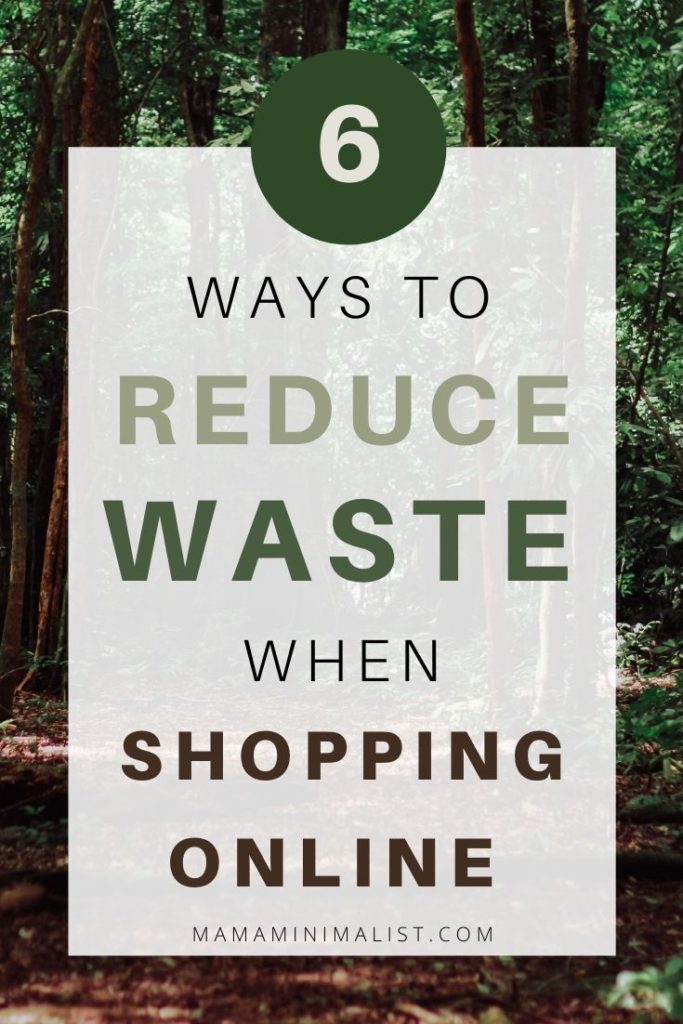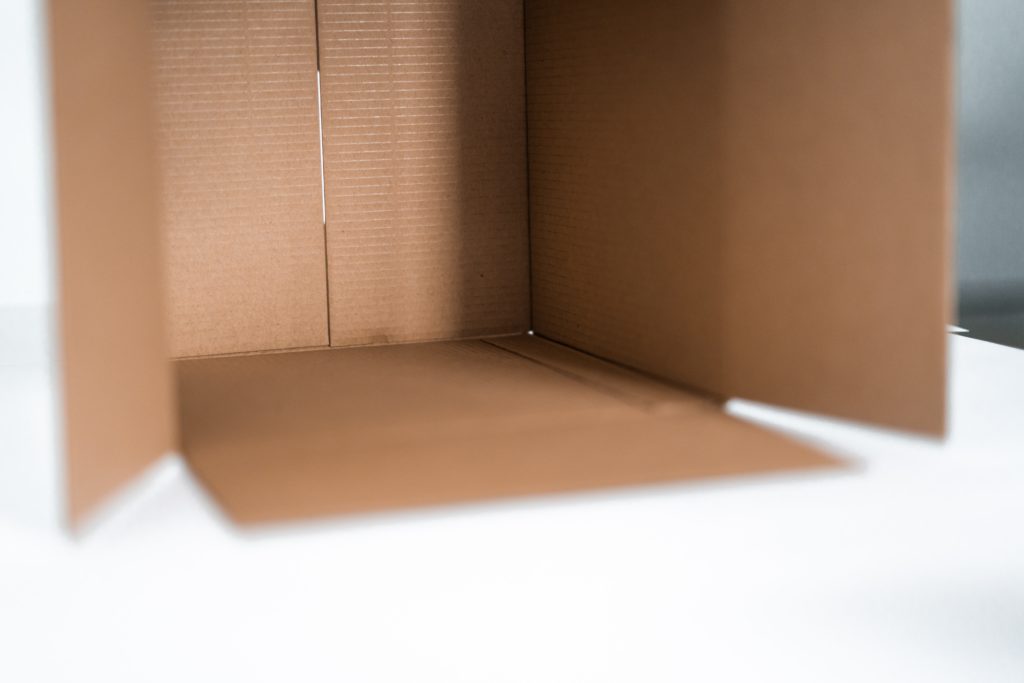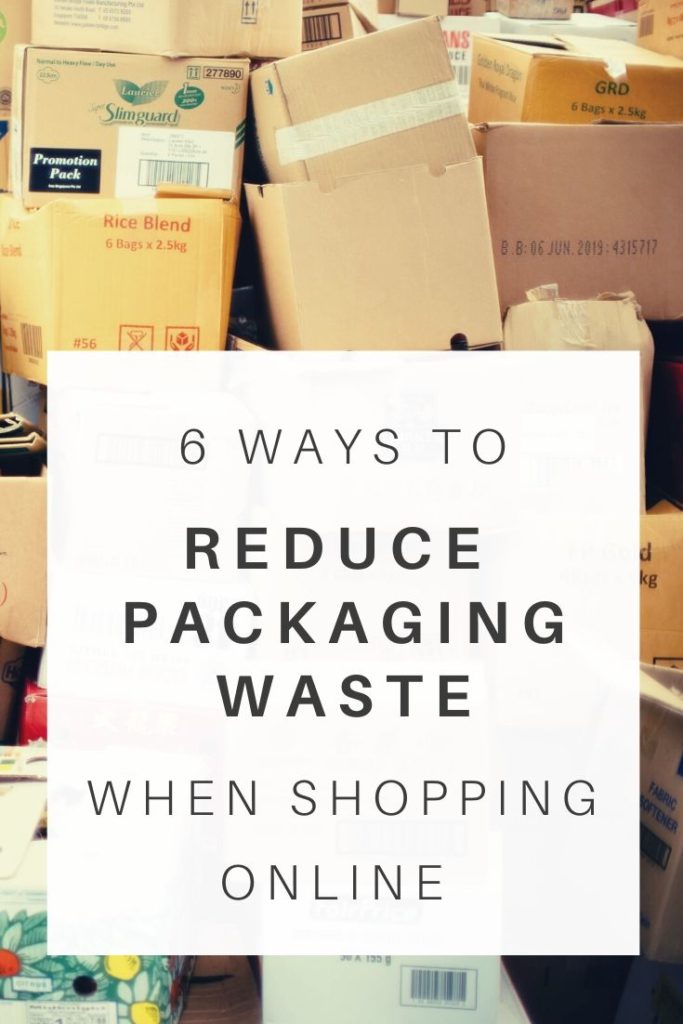How to Reduce Packaging Waste When Shopping Online
How to reduce packaging waste when shopping online:
6 easy steps
_____
Cardboard boxes. Paper filler. Bubblewrap. Air mailers. Do you ever find yourself wondering how to reduce packaging waste when shopping online?
Is it even possible?
Every year, 165 billion packages are shipped in the United States, which results in enough cardboard to equal more than 1 billion trees.
Online shopping isn’t going anywhere; in fact, e-commerce sales are expected to double in the next decade. Below, learn about the environmental implications of our collective online shopping habit; learn 6 steps to reducing packaging waste, too.
Eco-friendly advantages to online shopping
_____
Thanks to all that packaging waste, consumers often assume that in-store shopping is more eco-friendly.
But online shopping can be the sustainable shopping practice, for 2 reasons:
1. Because e-stores require less space, they use less energy.
E-stores do not create construction waste during the construction of a brick and mortar store.
There are no carbon emissions released from heating and cooling physical stores, either.
2. When done right, truck delivery reduces automobile emissions.
The Organization for Economic Cooperation and Development studied the efficacy of package delivery by calculating shipping distances, emissions from individual vehicles, the demands of retail space, airfreight transport vs. local truck delivery and the resources used to return goods.
They found that the biggest carbon footprint is created by all of our individual cars driving to the mall.
Online shopping eliminates car trips to a location and the carbon emissions related to it.
Said another way, online shopping can reduce unnecessary trips to the mall.
Delivery companies invest time time and resources to determine the most efficient routes for delivery of goods. As a result, FedEx and UPS are far more intentional than the average shopper who combines errands here or there.
Another consideration? Consumers are much more likely to return an item when it is bought in a physical store. And in order to return a purchase? You and I must drive to the store a second time.
Because returning purchases requires a second car trip, in-store returns almost always result in increased carbon emissions.
Did you know?
You can find The Sustainable Minimalists Podcast wherever you get your podcasts.
Apple Podcasts | Google Podcasts | Spotify | Stitcher
Disadvantages to online shopping
_____
While the shipment of online purchases – when done right – can give e-commerce an edge, deliveries are rarely done right.
And when it’s done wrong? Excessive truck and airplane emissions harm the planet.
Here are 2 environmental disadvantages to online shopping:
1. Even after purchasing online, we continue to drive around town.
In a perfect world, online shopping would reduce the number of cars on the road. That’s because we rely on uber-efficient delivery companies to bring our purchases to our doorsteps. Right?
Wrong. Researchers at the University of Delaware found that online shopping has not had a positive impact on the amount of cars on the road.
Indeed, researchers found an increase in travel time, traffic delays, and vehicle emissions.
Their findings suggest that you and I are still going out on the town in our cars and doing other things despite making many purchases online.
2. All. That. Packaging. Waste.
There’s no getting around it: Online shopping results in an awful lot of packaging waste in the form of cardboard boxes, plastic filler, Styrofoam and more.
One particularly detrimental form of packaging is bubble mailers, which are lighter and allow for more items to be placed on planes and trucks. But mixed materials like bubble mailers often can’t be recycled and instead block recycling systems and slow down the recycling process.
This isn’t to say in-store shopping is a zero-waste alternative, however:
Let’s say you’re in a clothing store, and you spot a shirt that perfectly matches your style on the rack. You’re a savvy shopper and brought a reusable tote from home, so when you’re at the register purchasing this new shirt, you decline the single-use bag to carry your new purchase home.
Shopping in brick and mortar stores is therefore a zero-waste practice, right?
Wrong.
A worker definitely packaged that shirt in a plastic bag before it arrived in the store; he or she most likely placed on a single-use plastic hanger, too.
And all those identical shirts of varying sizes? Workers combined them into – you guessed it – a bigger plastic bag.
Then there’s the box all those shirts came in. You can bet the box contained plastic filler to keep those shirts pristine. (Damaged goods is expensive to companies, so they package the heck out of then to make sure they stay in sellable condition.)
The bottom line: When we shop for new items – whether online or in a brick and mortar store – we are creating waste.
How to reduce packaging waste when shopping online:
_____
Follow these tips to reduce packaging waste associated with e-commerce:
Fill your online shopping cart over the course of a week then buy all at once.
Doing so often results in fewer individual boxes arriving sporadically on your doorstep. (The company will instead package your purchases together!)
Buy from vendors with thoughtful packaging materials.
Some online stores do a great job of packaging things simply.
The Package Free Shop mails household items and health and beauty products in completely recyclable and compostable boxes and uses paper tape and wrapping that can also be recycled.
There are also many innovative startups that offer eco-friendly packaging alternatives.
Limeloop recycles billboard wraps to create durable shipping pouches that can be reused up to 2,000 times. Companies send orders to customers in the mailers, then customers attach a pre-paid return mailing label to return the pouch to the company to use for the next customer.
Noissue creates compostable mailers made from corn starch that break down completely within six months.
Packaging alternatives are out there, and they’ll become more mainstream as demand increases. So be on the lookout.
How to be eco-friendly when shopping online:
_____
Online shopping can be more eco-friendly than in-store shopping, but only when consumers shop intentionally.
Always opt for ground delivery.
Expedited shipping (like Amazon Prime) often requires air travel, which has an additional environmental cost over ground transport.
Amazon offers the option to decline Prime shipping in exchange for store credits, so it may be financially advantageous to decline that 2-day shipping and embrace ground transport, instead.
Stay home with all that extra free time.
Remember: The Number One environmental benefit to online shopping is a reduction in automobile travel.
So don’t drive! Go for a hike or a bike ride, instead. Or embrace slow living by simply staying home.
Do your product research online.
Instead of going to a brick and mortar store to touch, feel and compare products, do your product research online, instead.
When you use the power of the internet to make product choices, you’re intentionally curbing emissions your automobile would have made.
[Related: 4 Ways to be a More Conscious Consumer]
Be Amazon savvy.
There are many ways to be eco-friendly while shopping on Amazon. Here are my favorite tricks:
– Contact Amazon and request less packaging.
- Send an email to customer service (cs-reply@amazon.com) asking them to avoid plastic packaging and extra packaging – including no bubble wrap, air mailers or packing peanuts.
- Call Amazon at 1 (888) 280-4331 and make your request over the phone.
- Live chat with an Amazon associate on their customer service Contact Page.
– Use the “frustration free” option.
As you’re perusing Amazon, type what you’re looking for in the search box with the phrase “frustration free” at the end. This will bring you to products with minimal packaging.
If you’re buying a box of diapers, for example, buying those diapers frustration free would mean that the box of diapers comes to your doorstep without it being placed in a second box that’s also filled with brown paper.
– Choose your Amazon Day.
Combine orders and cut back on packaging: Request that multiple orders be delivered on the same day (a.k.a. your Amazon Day!).
Amazon says it has eliminated more than 500 million boxes and 244,000 tons of packaging materials by cutting back on overboxing.
I’d love to hear from you! How do you reduce packaging waste when shopping online? Leave your best tips in the comments for the rest of us, and thank you!
Stay in-the-know!
Sign up for monthly eco-friendly inspiration.





One thought on “How to Reduce Packaging Waste When Shopping Online”
These Amazon tips are amazing!! I try not to shop on there much but I will for sure be trying these when I do!
Comments are closed.